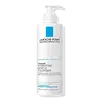La Roche-Posay Toleriane Hydrating Gentle Cleanser Versus Peach Slices Snail Rescue Purifying Cleanser
What's inside
What's inside
 Key Ingredients
Key Ingredients

 Benefits
Benefits

 Concerns
Concerns

 Ingredients Side-by-side
Ingredients Side-by-side

Water
Skin ConditioningSnail Secretion Filtrate
Skin ConditioningPotassium Cocoyl Glycinate
Lauryl Hydroxysultaine
CleansingAcrylates Copolymer
Glycerin
HumectantTromethamine
BufferingHyaluronic Acid
HumectantHydrolyzed Hyaluronic Acid
HumectantSodium Hyaluronate
HumectantCoco-Glucoside
CleansingCentella Asiatica Leaf Extract
Skin ConditioningCentella Asiatica Root Extract
Skin ConditioningCentella Asiatica Extract
CleansingAsiaticoside
AntioxidantAsiatic Acid
Skin ConditioningMadecassic Acid
Skin ConditioningMadecassoside
AntioxidantButylene Glycol
HumectantSorbitol
HumectantPotassium Benzoate
PreservativePinus Pinaster Bark Extract
Antioxidant1,2-Hexanediol
Skin ConditioningPropanediol
SolventSodium Chloride
MaskingCitric Acid
BufferingDecyl Glucoside
CleansingSodium C14-16 Olefin Sulfonate
CleansingTrisodium Ethylenediamine Disuccinate
Rosmarinus Officinalis Leaf Oil
MaskingWater, Snail Secretion Filtrate, Potassium Cocoyl Glycinate, Lauryl Hydroxysultaine, Acrylates Copolymer, Glycerin, Tromethamine, Hyaluronic Acid, Hydrolyzed Hyaluronic Acid, Sodium Hyaluronate, Coco-Glucoside, Centella Asiatica Leaf Extract, Centella Asiatica Root Extract, Centella Asiatica Extract, Asiaticoside, Asiatic Acid, Madecassic Acid, Madecassoside, Butylene Glycol, Sorbitol, Potassium Benzoate, Pinus Pinaster Bark Extract, 1,2-Hexanediol, Propanediol, Sodium Chloride, Citric Acid, Decyl Glucoside, Sodium C14-16 Olefin Sulfonate, Trisodium Ethylenediamine Disuccinate, Rosmarinus Officinalis Leaf Oil
 Reviews
Reviews

Ingredients Explained
These ingredients are found in both products.
Ingredients higher up in an ingredient list are typically present in a larger amount.
Glycerin is already naturally found in your skin. It helps moisturize and protect your skin.
A study from 2016 found glycerin to be more effective as a humectant than AHAs and hyaluronic acid.
As a humectant, it helps the skin stay hydrated by pulling moisture to your skin. The low molecular weight of glycerin allows it to pull moisture into the deeper layers of your skin.
Hydrated skin improves your skin barrier; Your skin barrier helps protect against irritants and bacteria.
Glycerin has also been found to have antimicrobial and antiviral properties. Due to these properties, glycerin is often used in wound and burn treatments.
In cosmetics, glycerin is usually derived from plants such as soybean or palm. However, it can also be sourced from animals, such as tallow or animal fat.
This ingredient is organic, colorless, odorless, and non-toxic.
Glycerin is the name for this ingredient in American English. British English uses Glycerol/Glycerine.
Learn more about GlycerinChances are, you eat sodium chloride every day. Sodium Chloride is also known as table salt.
This ingredient has many purposes in skincare: thickener, emulsifier, and exfoliator.
You'll most likely find this ingredient in cleansers where it is used to create a gel-like texture. As an emulsifier, it also prevents ingredients from separating.
There is much debate on whether this ingredient is comedogenic. The short answer - comedogenic ratings don't tell the whole story. Learn more about comegodenic ratings here.
The concensus about this ingredient causing acne seems to be divided. Research is needed to understand if this ingredient does cause acne.
Scrubs may use salt as the primary exfoliating ingredient.
Learn more about Sodium ChlorideWater. It's the most common cosmetic ingredient of all. You'll usually see it at the top of ingredient lists, meaning that it makes up the largest part of the product.
So why is it so popular? Water most often acts as a solvent - this means that it helps dissolve other ingredients into the formulation.
You'll also recognize water as that liquid we all need to stay alive. If you see this, drink a glass of water. Stay hydrated!
Learn more about Water